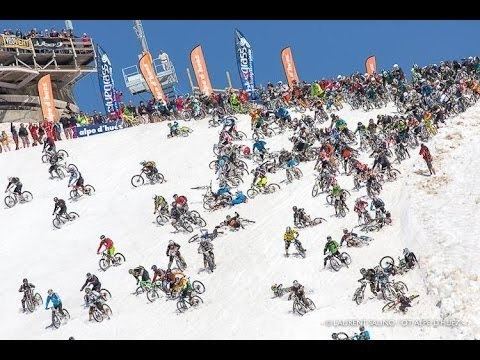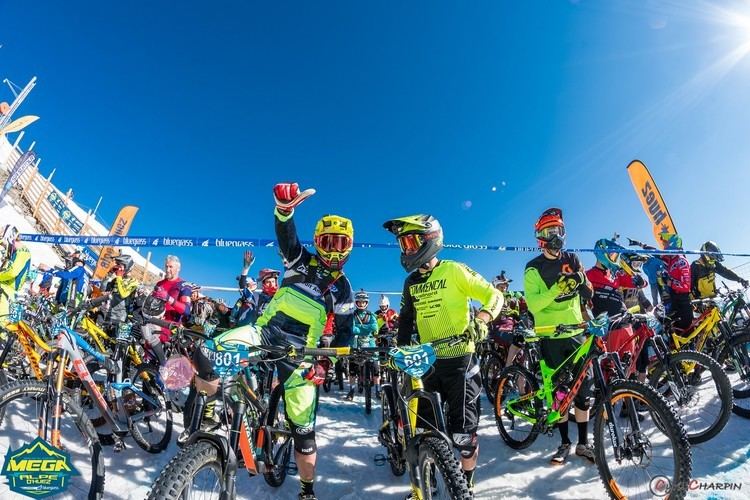Local name(s) Mega | Type Downhill marathon | |
 | ||
Date Alps - 10/11/12 July 2009 Region French Alps, Peru and Reunion Island Most recent Remy Absalon
Anne-Caroline Chausson | ||
Bmc factory trailcrew 2016 megavalanche onboard with fran ois bailly ma tre
Megavalanche is a mountainbike downhill marathon style event. The most famous round is run from the French Alps town of Alpe D'Huez, starting on the glaciated summit of the Pic Blanc (3,300m) and descending to the lush meadows of the valley bottom at Allemont (720m), after some 2000 metres down and 30 km along.
Contents
- Bmc factory trailcrew 2016 megavalanche onboard with fran ois bailly ma tre
- Equipment
- Fitness
- References

The format of the event follows three main days:

Around 2,700 participants will depart the summit of the Pic Blanc with top competitors making the 2000m descent in less than an hour (00:38:28 in 2013).

Many of the competitors are from mainland Europe, however an increasing contingent of British riders are making the pilgrimage, spurred on by ever increasing press about the event.

Other rounds of the event take place in Peru and Reunion Island.
Equipment
While this is a downhill race at the start, the event can cover up to 30 km in blistering heat of the summer. A downhill bike (often with upward of 8 inches(203 mm) of suspension travel at each end) is not recommended to be competitive, though many competitors choose to ride them. A dual-chainring equipped 'freeride' is the bike choice, having 5-7 inches (130-178 mm) of travel and single crown forks. The 2006 winner Nicolas Vouilloz rode a 150 mm travel bike with a Dura Ace chainset and semi slick rear tyre. Whilst 'Freeride' and 'all mountain' bikes are the best choice for competing and for the long uphill climb on the 'mega' course, downhill bikes provide a much more forgiving and comfortable ride over the rocky and often rutted terrain of the qualifier course.
Fitness
Competitors need physical strength for the top section, cardio for the road climbs and endurance to string it all together and keep going.
Training should include forearm work to limit arm pump, caused by hanging on to the bars and riding the rough sections. Bike set-up can also help to reduce this.
